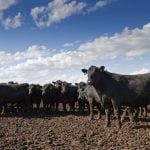
Tag Archives fertilizer

Maximize your nitrogen efficiency with the right practices
Strategic application can reduce N losses and boost productivity

Adding wood ash to soil both practical and cost-effective
Practical Research: Too often headed for the landfill, ash can reduce soils’ acidity and enhance cropland fertility

Understanding phosphorus, part 3: Developing fertilizer recommendations
Agronomy Management: It’s important to have adequate P close to the seed during the first six weeks of growth

Counter tariffs threaten fertilizer prices

Restore productivity on your eroded knolls
Landscape restoration, cover cropping, residue redistribution and adjusting crop inputs are some management practices that can help

Understanding soil phosphorus, part 1
Agronomy Management: Rotations and fertilizer management have dramatic effects on pools of organic and inorganic P

Expect smaller margins for error in 2025
Unless you're growing pinto beans, sharpen your pencils when calculating costs of production

U.S. Fertilizer group calls for tariff exemption
Canadian and American fertilizer groups oppose tariffs

Nutrien says U.S. farmers likely to bear tariff costs
The United States imports over 80 per cent of their potash from Canada

New Dutch Agriculture opener knife prevents seed burn
Wider fertilizer-to-seed spread reduces toxicity risk in dry conditions


